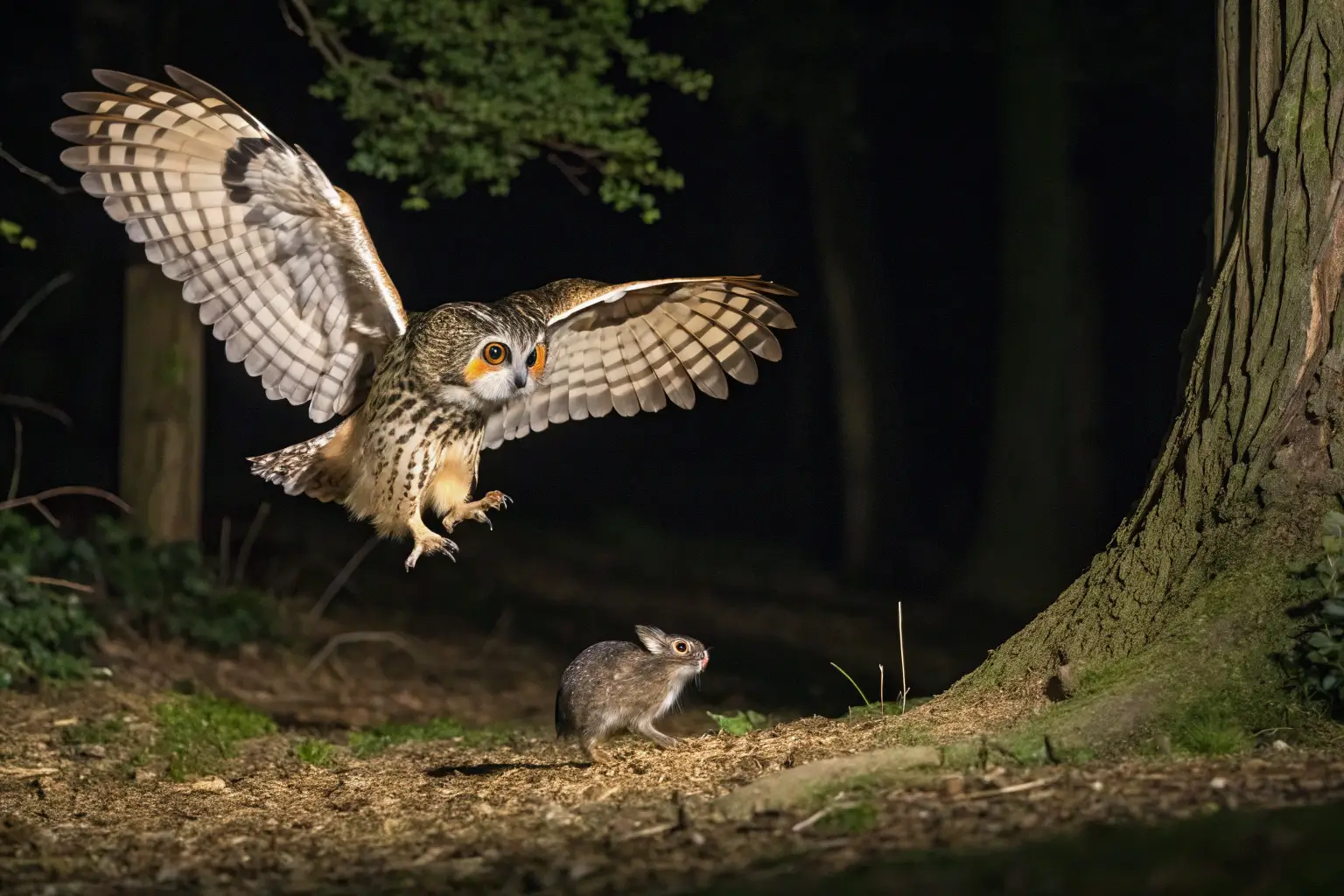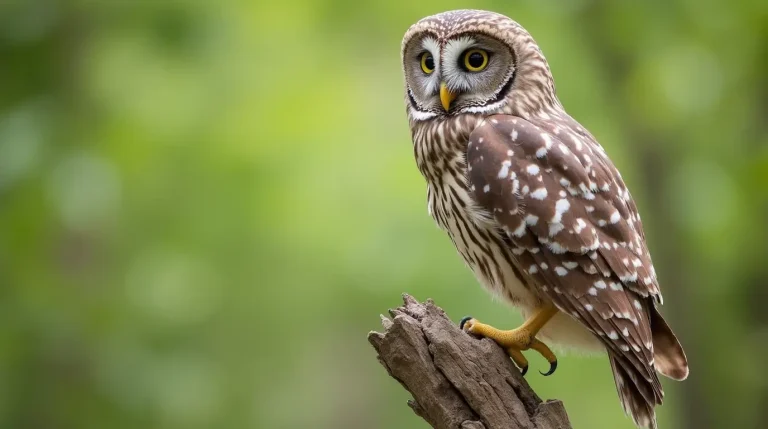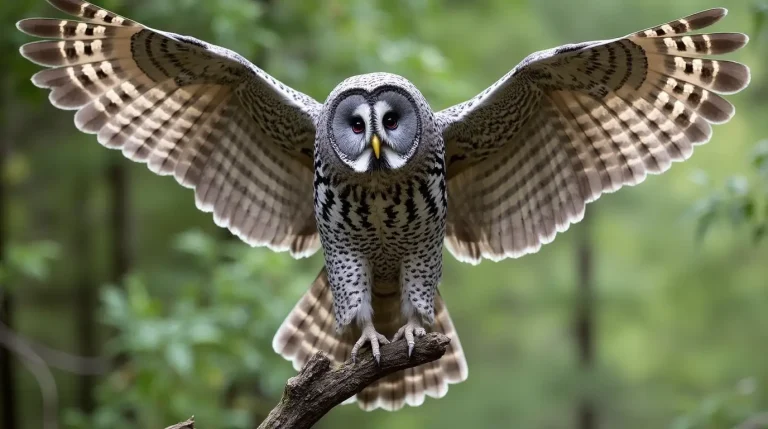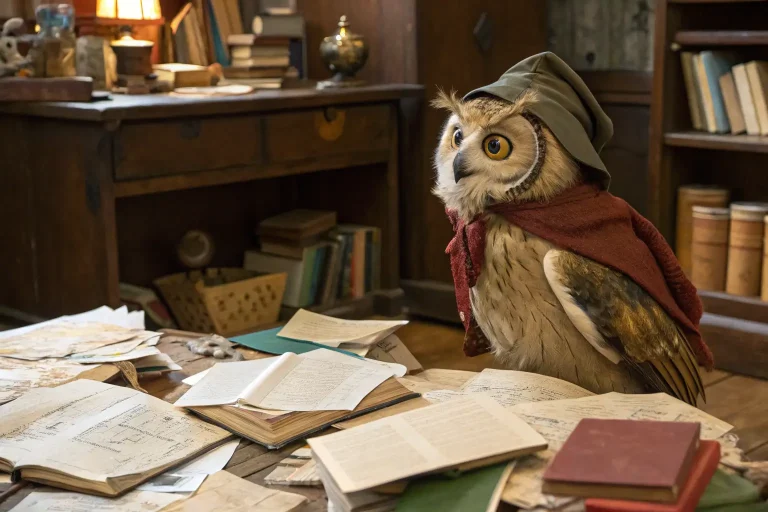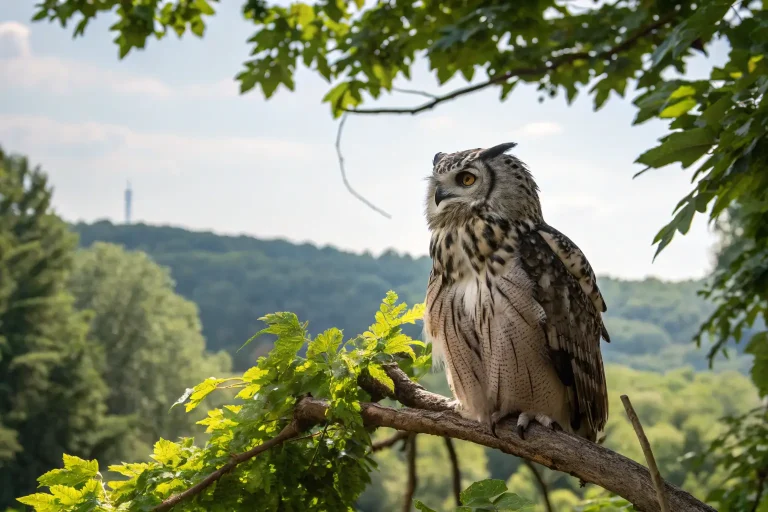How 7 Roles of Owls and Mice Define the Food Chain
Exploring what owls and mice in the food chain represent reveals the intricate balance of our natural ecosystems. These seemingly ordinary creatures play extraordinary roles that ripple throughout entire habitats. From energy transfer to population control, owls and mice exemplify the fundamental relationships that sustain biodiversity. Their interactions illuminate the complex web of life and demonstrate how each species, regardless of size, serves critical ecological functions. This article delves into the seven essential roles these animals fulfill and how understanding their place helps us appreciate the delicate balance of nature.
Introduction
When we look at what are owls and mice in the food chain, we discover more than just predator and prey. These animals represent fundamental ecological principles that maintain the health and stability of entire ecosystems. Owls, as skilled aerial predators, and mice, as prolific small mammals, interact in ways that define how energy and nutrients flow through natural communities.
Their relationship offers a perfect window into understanding trophic levels, energy transfer, and population dynamics. Did you know that a single barn owl can consume up to 1,000 mice per year? This staggering number demonstrates how these species are intricately connected and how their roles affect countless other organisms.
Learning about these relationships helps us appreciate the complexity of natural systems and understand how disruptions in one area can cascade throughout an entire ecosystem. Whether you’re a wildlife enthusiast, a student, or simply curious about nature’s interactions, exploring what owls and mice in the food chain represent provides valuable insights into the natural world’s delicate balance.
Species Overview
Owls: Silent Predators of the Night
Scientific Name: Owls belong to the order Strigiformes, comprising two families: Strigidae (true owls) and Tytonidae (barn owls).
Physical Characteristics: These birds of prey range from the tiny Elf Owl (about 5 inches tall) to the formidable Great Gray Owl (up to 33 inches in height). Most species feature forward-facing eyes that provide binocular vision, facial discs that collect sound, and specialized feathers allowing nearly silent flight. Their coloration typically includes mottled browns, grays, and whites that provide excellent camouflage.
Subspecies: The world hosts approximately 250 owl species adapted to diverse environments. Notable examples include the Great Horned Owl (Bubo virginianus), Snowy Owl (Bubo scandiacus), and Barn Owl (Tyto alba), each with adaptations specific to their habitats.
Mice: Prolific Small Mammals
Scientific Name: Most mice belong to the family Muridae, with common species including Mus musculus (house mouse) and various Peromyscus species (deer mice).
Physical Characteristics: These small rodents typically measure 2-5 inches in body length with an additional tail of similar length. They possess pointed snouts, rounded ears, and small eyes. Colors range from gray to brown to white, depending on species and habitat.
Subspecies: Mice have diversified extensively worldwide, with over 1,100 species of the Muridae family. From desert-adapted species like the cactus mouse to woodland dwellers like the white-footed mouse, these rodents have colonized nearly every terrestrial habitat.
Habitat and Distribution
Owls: Adaptable Hunters
Natural Habitat: Owls inhabit diverse environments from dense forests and open grasslands to desert regions and urban areas. Different species have specialized to fill ecological niches across these habitats.
Geographic Range: These predators exist on every continent except Antarctica. The Barn Owl holds the distinction of having one of the widest distributions of any bird species, found across six continents.
Adaptations: Owls have evolved remarkable adaptations for their predatory lifestyle. Their asymmetrical ear placement allows precise sound localization; they can detect a mouse moving under snow from 75 feet away. Their specialized flight feathers have serrated edges that break up airflow, allowing nearly silent hunting approaches.
Mice: Ubiquitous and Resilient
Natural Habitat: Mice thrive in numerous environments including grasslands, forests, mountains, and human settlements. They create burrows, nests in tree hollows, or utilize existing structures for shelter.
Geographic Range: These small mammals have established populations on every continent, including human-introduced populations on Antarctica research stations. Their ability to adapt to human presence has made them one of the most widespread mammal groups.
Adaptations: Mice have evolved high reproductive rates, efficient digestion of various food sources, and keen senses to detect predators. Their small size allows them to utilize microhabitats inaccessible to larger animals, while their incisors grow continuously to compensate for wear from gnawing.
Diet and Feeding Habits
Owls: Specialized Predators
What They Eat: When examining what owls and mice in the food chain consume, owls primarily feed on small mammals—particularly rodents like mice, voles, and shrews. Larger owl species may take rabbits, skunks, and other birds, while smaller species might focus on insects and amphibians.
Hunting Behavior: Owls are primarily nocturnal hunters using a “sit and wait” strategy. They perch strategically and scan their surroundings using their exceptional hearing and vision before silently swooping down on prey. Many species can hunt in complete darkness, relying solely on sound.
Dietary Needs: As obligate carnivores, owls require high-protein diets. They swallow smaller prey whole and later regurgitate indigestible portions (bones, fur, feathers) as pellets. An adult owl may require 3-4 mice daily to maintain energy needs, translating to over 1,000 mice annually.
Mice: Opportunistic Omnivores
What They Eat: Mice are adaptable omnivores consuming seeds, grains, fruits, insects, and occasionally carrion. Their diets shift seasonally based on food availability, making them highly successful across varied environments.
Foraging Behavior: These rodents typically forage at night to avoid predators, using well-established trails and their excellent sense of smell to locate food. They often hoard food in caches for later consumption—an important ecological service that aids in seed dispersal.
Dietary Needs: A mouse consumes approximately 3 grams of food daily (roughly 10% of its body weight). Their high metabolic rate necessitates frequent feeding, and they rarely venture far from water sources, as hydration is crucial to their survival.
Behavior and Social Structure
Owls: Primarily Solitary Hunters
Social Behavior: Most owl species maintain solitary lifestyles outside breeding season. Territories are established and defended vigorously, with pairs typically forming during mating periods. This solitary nature aligns with their role as apex predators in the food chain.
Communication: Owls utilize distinctive vocalizations ranging from the familiar “hoot” to screeches, whistles, and barks. These sounds serve to establish territory, attract mates, and warn of potential threats. Beyond vocal communication, visual displays like head-bobbing and feather-fluffing convey important social information.
Mating and Reproduction: Most owl species are monogamous, often maintaining pair bonds for life. Nesting typically occurs in tree cavities, abandoned nests, or cliff ledges. Clutch sizes range from 1-12 eggs depending on the species and food availability. Young owls (owlets) remain dependent on parents for several months while developing hunting skills.
Mice: Highly Social Creatures
Social Behavior: Mice establish complex social hierarchies within family groups or colonies. These structures feature dominant males, breeding females, and subordinate individuals with defined roles. Understanding what owls and mice in the food chain contribute socially helps explain their ecological impact.
Communication: These rodents communicate through an array of ultrasonic vocalizations inaudible to humans, alongside visual cues and scent marking. They leave pheromone trails to indicate safe routes and food sources, creating an invisible communication network throughout their territory.
Mating and Reproduction: Mice are prolific breeders with females potentially producing 5-10 litters annually, each containing 5-12 young. This extraordinary reproductive capacity—with sexual maturity reached at just 6-8 weeks—explains their ecological role as a renewable food source for numerous predators.
Conservation Status
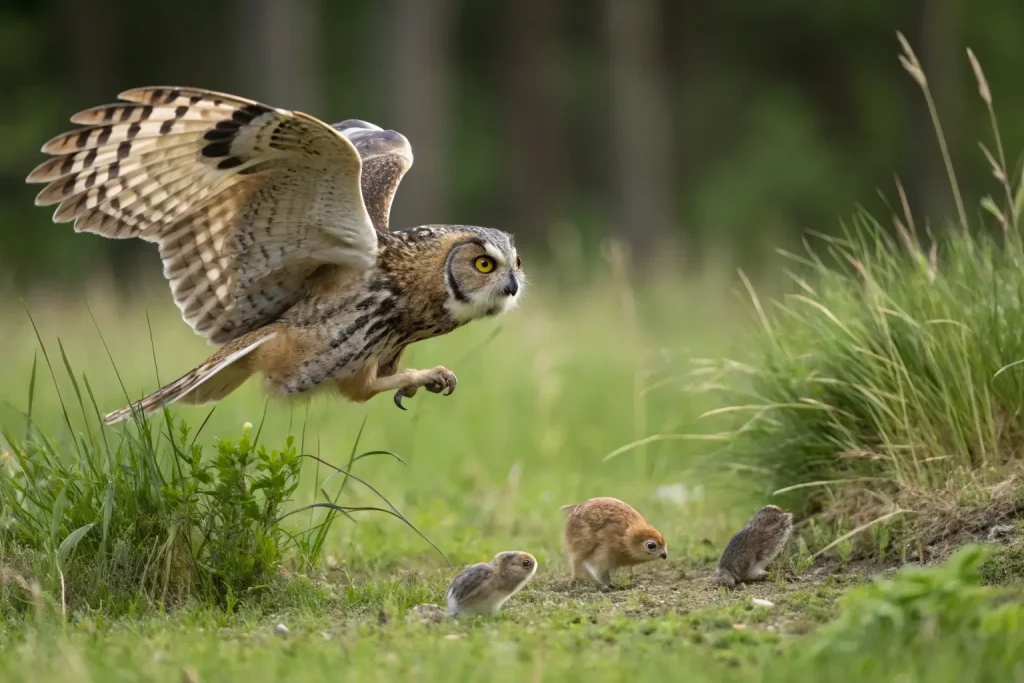
Owls: Facing Habitat Challenges
Endangerment Level: While many owl species maintain stable populations, several face significant threats. The IUCN Red List classifies species like the Blakiston’s Fish Owl as endangered, with numerous others listed as vulnerable or near threatened.
Threats: Habitat loss through deforestation and urban development represents the primary threat to owl populations worldwide. Additional challenges include rodenticide poisoning (affecting owls that consume poisoned prey), vehicle collisions, and persecution based on superstition in some regions.
Conservation Efforts: Protected area establishment, nest box programs, and public education initiatives have helped stabilize some threatened owl populations. Organizations like the Global Owl Project coordinate international conservation efforts, highlighting how understanding what owls and mice in the food chain contribute helps guide protection strategies.
Mice: Abundant Yet Ecologically Vulnerable
Endangerment Level: While common mice species like the house mouse thrive, numerous native and specialized mice species face significant threats. Several island-endemic species have already been driven to extinction by introduced predators.
Threats: Specialized native mice face habitat destruction, competition from introduced rodent species, and predation by non-native animals. Agricultural intensification and pesticide use also impact wild mouse populations.
Conservation Efforts: Conservation strategies for native mice include habitat preservation, invasive species management, and captive breeding programs for critically endangered species. These efforts recognize wild mice’s ecological importance as seed dispersers and prey species.
Interesting Facts
Fascinating Owl Adaptations
- An owl can rotate its head up to 270 degrees due to extra vertebrae in its neck and specialized blood vessels that prevent oxygen deprivation during extreme head movements.
- Owl eyes are fixed in their sockets and cannot move independently, necessitating head rotation to change their field of view.
- The Great Gray Owl can detect prey moving beneath 18 inches of snow using solely its acute hearing.
- Despite their reputation for wisdom, owls have relatively small brains compared to other birds of similar size.
- Some owl species practice “prey caching,” storing excess food for later consumption—a behavior that influences local rodent populations.
Remarkable Mouse Capabilities
- Mice can squeeze through openings as small as a quarter-inch wide due to their collapsible rib cages.
- A mouse’s heart beats approximately 500-600 times per minute (compared to 60-100 for humans).
- These rodents can jump up to 12 inches high and run up to 8 miles per hour.
- Mice lack the ability to vomit or burp due to their unique digestive system structure.
- Some desert mouse species can survive without drinking water, obtaining all necessary moisture from their food.
Tips for Supporting These Species
Creating Owl-Friendly Environments
While most owls aren’t kept as pets, you can support wild populations by:
- Installing nest boxes designed for local owl species
- Maintaining natural areas with mature trees for nesting and hunting perches
- Avoiding rodenticide use, which can lead to secondary poisoning
- Reducing outdoor lighting that can disrupt nocturnal hunting patterns
- Driving cautiously at night in rural areas to prevent owl-vehicle collisions
Responsible Mouse Management
If dealing with mice as household pests:
- Use humane trap-and-release methods when possible
- Seal entry points rather than relying solely on lethal control
- Consider natural deterrents like peppermint oil before chemical options
- If keeping fancy mice as pets, provide appropriate housing with enrichment activities
- Research proper nutrition and veterinary care for pet mice
Role in the Ecosystem
The 7 Critical Roles of Owls and Mice in the Food Chain
Understanding what owls and mice in the food chain contribute reveals seven fundamental ecological roles that maintain ecosystem health:
1. Energy Transfer Conduits
Mice convert plant material into animal protein, capturing energy from primary producers and making it available to higher trophic levels. Owls, as tertiary consumers, represent how this energy moves up the food chain. This relationship exemplifies the approximately 90% energy loss that occurs between each trophic level.
2. Population Regulators
Owls provide crucial top-down control of rodent populations. A single Barn Owl family can consume over 3,000 mice annually, preventing explosive growth that could damage vegetation and crops. This relationship demonstrates how predators maintain prey populations at sustainable levels.
3. Biodiversity Maintainers
The predator-prey relationship between owls and mice supports wider biodiversity. By controlling dominant species, these interactions prevent any single species from monopolizing resources, allowing more diverse plant and animal communities to flourish.
4. Indicator Species
Both animals serve as bioindicators of ecosystem health. Declines in owl populations often signal environmental problems like habitat fragmentation or pesticide contamination. Similarly, changes in mouse populations can indicate shifts in vegetation or predator numbers.
5. Nutrient Cyclers
Mice accelerate decomposition by consuming plant matter and seeds, while their burrowing aerates soil and increases microbial activity. Owl pellets and droppings redistribute nutrients concentrated from multiple prey animals, enriching soil in their territories.
6. Habitat Engineers
Mice create microhabitats through their burrowing activities, which can subsequently be used by insects, reptiles, and other small mammals. Their seed caching behavior promotes plant germination and forest regeneration. Owls influence habitat structure through their hunting behavior and nest construction.
7. Evolutionary Drivers
The predator-prey relationship between owls and mice has driven evolutionary adaptations in both species. Mice have developed keen hearing, quick reflexes, and reproductive strategies to compensate for predation losses. Owls have evolved specialized hearing, silent flight, and night vision to improve hunting success. This coevolutionary relationship has shaped both species for millions of years.
Impact of Ecological Disruption
Disruptions to the owl-mouse relationship can trigger cascading effects throughout ecosystems:
- Removing owls can lead to rodent population explosions, causing crop damage and disease transmission increases
- Severe reductions in mouse populations can force owls to switch prey or relocate, potentially destabilizing other predator-prey relationships
- Chemical controls targeting mice can cause secondary poisoning in owls and other predators
- Habitat fragmentation can isolate owl populations and reduce their regulatory effect on rodent numbers
Conclusion
The relationship between owls and mice perfectly illustrates the intricate connectedness of all living things within natural systems. What owls and mice in the food chain represent goes far beyond a simple predator-prey relationship—they embody ecological principles like energy transfer, population regulation, and coevolution that maintain the health and balance of entire ecosystems.
From the silent flight of an owl hunting under moonlight to the busy activity of mice creating underground networks, these species perform ecological services that benefit countless other organisms, including humans. Their seven critical roles demonstrate how even common species contribute essential functions that cannot be easily replaced or artificially replicated.
As we face unprecedented environmental challenges, understanding these ecological relationships becomes increasingly important. By appreciating what owls and mice in the food chain contribute, we gain insights into how to better protect natural systems and the services they provide. Whether through habitat preservation, reduced pesticide use, or supporting wildlife corridors, each of us can help maintain these vital ecological relationships for future generations.
Frequently Asked Questions
What level of the food chain are owls on?
Owls typically occupy the third trophic level in a food chain, making them tertiary consumers or top predators. They feed primarily on secondary consumers (like mice) that eat plants. Some larger owl species may even function as quaternary consumers when they prey on other predators like weasels or smaller owls.
Where do mice fit in the food chain?
Mice generally occupy the second trophic level as primary consumers or herbivores, feeding directly on plants and seeds (primary producers). However, their omnivorous diet means they sometimes function as secondary consumers when eating insects. This flexibility highlights what owls and mice in the food chain contribute to energy flow through multiple pathways.
How many mice does an owl eat in a day?
An adult owl typically consumes 3-4 mice daily, depending on the owl’s size and energy requirements. Larger species like Great Horned Owls may need more prey, while smaller species require less. During breeding season, a nesting pair with owlets might capture 10-15 mice daily to sustain the family.
Would ecosystems collapse if owls disappeared?
While ecosystems wouldn’t immediately collapse without owls, their absence would trigger significant disruptions. Rodent populations would likely increase rapidly, potentially causing agricultural damage, disease transmission, and competition with other small mammals. Over time, the system would reach a new equilibrium, but with reduced biodiversity and altered ecosystem functioning.
Do mice have any positive ecological impacts?
Absolutely. Mice serve crucial ecological functions as seed dispersers, soil aerators through burrowing, and food sources for dozens of predator species. Their seed caching behavior actively contributes to forest regeneration and plant diversity. Understanding what owls and mice in the food chain positively contribute helps appreciate even “pest” species’ ecological value.
How can climate change affect the owl-mouse relationship?
Climate change may disrupt this relationship through several mechanisms: altered precipitation patterns affecting plant productivity and mouse populations; changing temperature regimes affecting breeding timing for both species; range shifts that create mismatches between predators and prey; and increased frequency of extreme weather events affecting hunting success and reproduction.
Are barn owls good for rodent control on farms?
Barn owls are exceptional natural rodent controllers. A single nesting pair can remove approximately 3,000 rodents annually from a farm. Many agricultural programs now install barn owl nest boxes specifically for biological pest control, recognizing what owls and mice in the food chain dynamics can contribute to sustainable farming practices.

